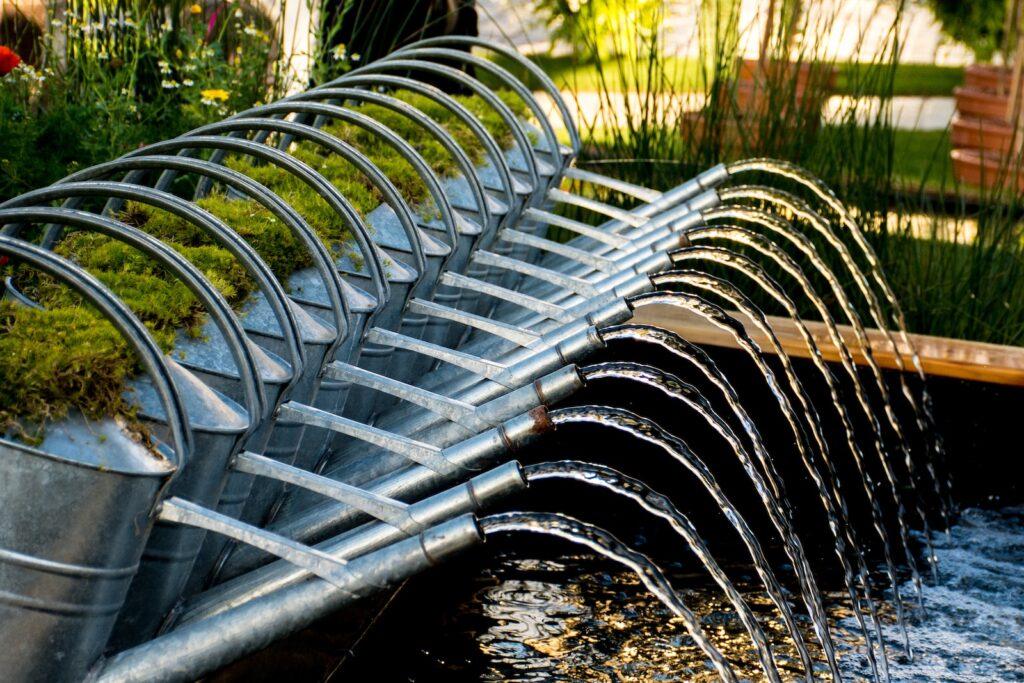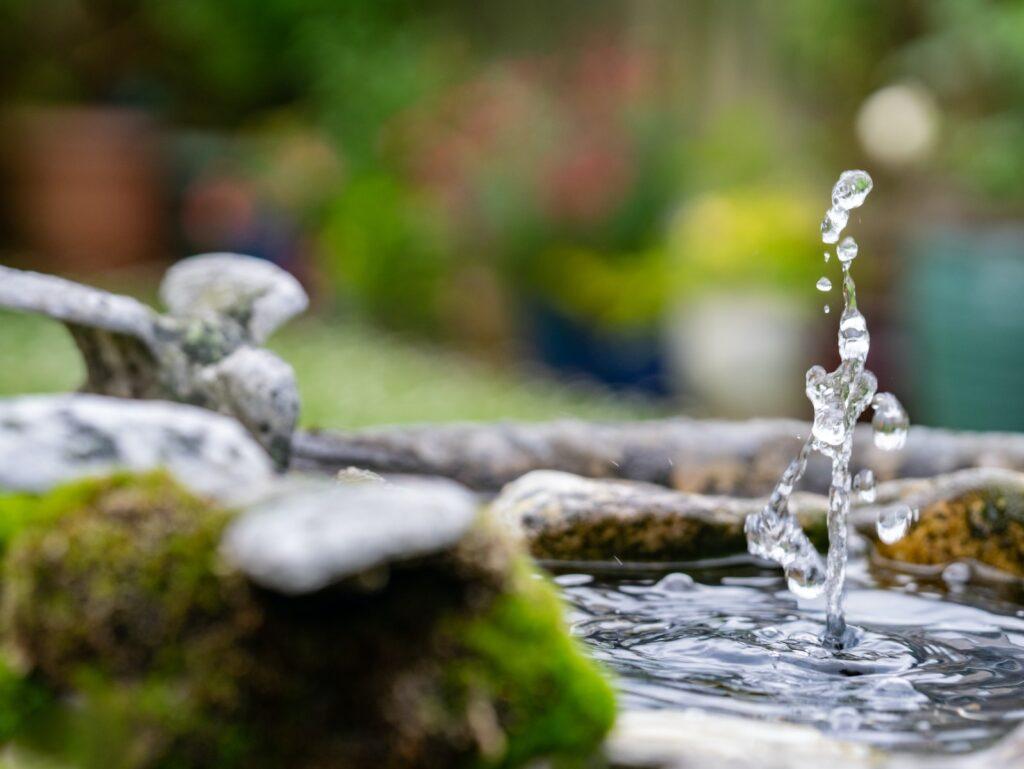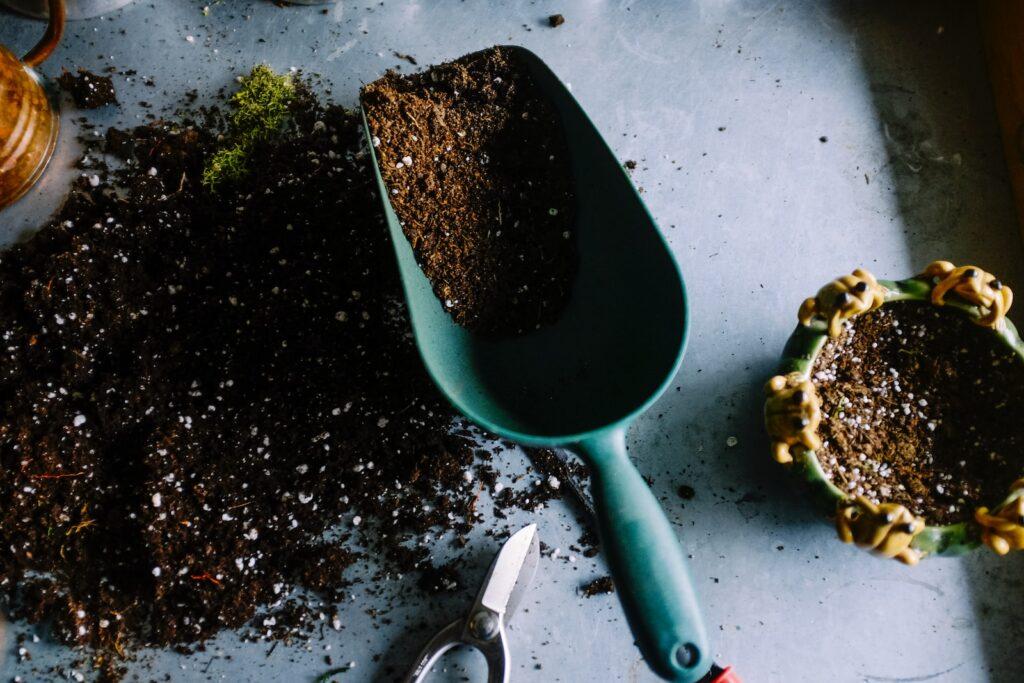Rated & Reviewed is reader-supported. When you buy through links on our site, we may earn an affiliate commission. Learn more.
Pond fountains are a great addition to any body of water, providing numerous benefits that make them an ideal choice for ponds, lakes, and even swimming pools. A floating pond fountain is particularly popular due to their ease of installation and versatility in design and size.
One of the primary benefits of pond fountains is their ability to circulate and oxygenate the water. This is especially important for small ponds or fish tanks where stagnant water can quickly become a breeding ground for harmful bacteria. By keeping the water moving, pond fountains help maintain healthy levels of oxygenation and reduce the risk of algae growth.
In addition to their functional benefits, pond fountains also add aesthetic value to any body of water. They come in a variety of designs and sizes, making them suitable for different types of ponds and lakes. Whether you’re looking for a simple floating fountain or a more elaborate lake fountain with multiple tiers, there’s sure to be an option that fits your needs.
Another advantage of pond fountains is their ability to deter mosquitoes and other insects from breeding in stagnant water. This makes them ideal for bird baths and ground pools that are prone to insect infestations. By keeping the water moving, these fountains create an environment that is less hospitable to insects while still providing a source of hydration for birds and other wildlife.
For those who are eco-conscious, solar-powered pond fountains offer an environmentally friendly option that can save on electricity costs while still providing all the benefits of traditional fountains. These fountains work by harnessing energy from the sun during the day and using it to power the fountain at night.

Choosing the Right Pond Pump for Your Pond Fountain or Aerator
Determine the size of your Pond and Fountain to select the appropriate GPH (gallons per hour) pump.
When choosing a pond pump for your fountain or aerator, it is important to consider the size of your pond and fountain. The GPH rating of a pump will determine how much water it can move in an hour. A larger pond or fountain will require a higher GPH rating to ensure proper circulation and oxygenation.
To determine the appropriate GPH rating for your pond, you can use a simple formula: multiply the volume of water in your pond by two. For example, if you have a 1,000-gallon pond, you would need a pump with at least a 2,000 GPH rating.
Consider energy efficiency when choosing a pond pump.
In addition to selecting the right size pump for your needs, it is also important to consider energy efficiency when choosing a pond pump. Look for pumps that are designed with energy-saving features such as an energy-efficient 110V power plug or solar-powered water fountain pumps.
Solar powered pond fountains are particularly popular among eco-conscious consumers because they rely on renewable energy sources rather than electricity from the grid. These pumps are also easy to install and maintain since they do not require any wiring or electrical work.
Look for a pump with a long power cord.
Another important factor to consider when choosing a pond pump is the length of its power cord. A longer power cord provides greater flexibility in terms of placement and installation options. Look for pumps with at least 10-foot power cords so that you can easily position them where needed without having to worry about extension cords or other electrical connections.
Check compatibility with existing equipment.
Before purchasing any new equipment for your pond or fountain, be sure to check its compatibility with any existing equipment you may have installed. This is especially important if you already have an aerator system installed in your pond since some fountain pumps may not work well with certain aerators.
Consider efficient pond aeration systems that work well with your selected pump.
If you are in the market for both a pond pump and an aerator, consider purchasing them together as part of an efficient pond aeration system. These systems are designed to work together seamlessly, ensuring optimal circulation and oxygenation throughout your pond or fountain.
Read reviews and ratings on Amazon or other reputable sites.
When shopping for a pond pump, it is always a good idea to read reviews and ratings from other customers before making a purchase. Sites like Amazon offer detailed product descriptions as well as customer reviews that can help you make an informed decision about which pump is right for your needs.
Consider maintenance requirements.
Finally, be sure to consider the maintenance requirements of any pump you are considering. Some pumps require regular cleaning or replacement of parts in order to maintain optimal performance over time. Be sure to factor these requirements into your decision-making process so that you can choose a pump that will provide reliable service for years to come.
Sizing a Fountain or Aerator for Large Ponds or Lakes
Proper aeration and circulation are key. One of the most effective ways to achieve this is by using a fountain or aerator. However, selecting the right size and type of equipment can be challenging, especially for larger bodies of water.
Consider the Size of Your Pond or Lake
The first thing to consider when selecting a fountain or aerator is the size of your pond or lake. Larger bodies of water require more powerful equipment to properly aerate and circulate water. If you choose an undersized fountain or aerator, it may not be able to keep up with the demands of your pond or lake, leading to poor water quality and potentially harmful conditions for aquatic life.
The VFX Series Aerating Pond Fountain
One great option for larger ponds or lakes is the VFX Series Aerating Pond Fountain. This high-quality equipment includes a large float that can support the weight of both the fountain and its motor while keeping it stable in the water. The VFX Series also features multiple nozzle options that can create different spray patterns, allowing you to customize both the aesthetics and functionality of your pond or lake.
Spray Pattern and Nozzle Options
When sizing a fountain or aerator, it’s important to take into account both the desired spray pattern and nozzle options. Different spray patterns can affect the aesthetics of your pond or lake, creating anything from a subtle mist to an impressive geyser-like display. Meanwhile, different nozzle options can impact how much oxygenation and circulation are provided by the equipment.
It’s important to choose a fountain or aerator that is appropriately sized for your pond or lake based on these factors. Properly oxygenated and circulated water helps maintain overall water quality while supporting aquatic life.
Many people have found success with using fountains as their primary method for maintaining their ponds’ health. For example, one user on Reddit shared their experience using a fountain to keep their pond clean and healthy. They noted that the fountain helped with algae control, improved water clarity, and even attracted wildlife to the area.
According to a study conducted by the University of Florida, proper aeration can improve water quality in ponds and lakes. The study found that increased oxygen levels from aeration can help reduce the amount of nutrients in the water, leading to less algae growth and better overall water quality.
Calculating Your Pond’s Size and Pump Needs
Determine Your Pond’s Size
Before purchasing a pond pump, it is essential to determine the size of your pond. The first step in calculating your pond’s size is to measure its length, width, and depth. Once you have these measurements, multiply them together to get the total cubic feet of water in your pond. Next, multiply this number by 7.5 to convert cubic feet to gallons.
For example, if your pond measures 10 feet long, 8 feet wide, and 3 feet deep, then its volume would be calculated as follows:
10 ft x 8 ft x 3 ft = 240 cubic feet
240 cubic feet x 7.5 = 1,800 gallons
Choosing the Right Pump
Once you know the total volume of water in your pond, you can choose a pump with an appropriate flow rate measured in gallons per hour (gph). A good rule of thumb is to select a pump that has a flow rate of at least half the total volume of your pond.
For instance, if your pond contains 1,000 gallons of water, then you should choose a pump with a flow rate of at least 500 gph. This will ensure that all the water in your pond gets circulated through the filter system at least once every two hours.
Consider Height and Distance
When selecting a pump for your pond fountain or waterfall feature, it’s also important to consider how high and far the water needs to travel. The higher and farther it needs to go; the more powerful the pump needs to be.
For instance, if you want water to shoot up six feet into the air from your fountainhead or waterfall feature before cascading back down into the pool below; then you’ll need a more powerful pump than if you were just circulating water around an ornamental pool without any additional features.
Calculate Cubic Feet
To calculate how many cubic feet of water your pond contains, divide the total number of gallons by 7.48, which is the number of gallons in a cubic foot.
For example, if your pond contains 1,800 gallons of water, then it has a volume of approximately 240 cubic feet (1,800 ÷ 7.48 = 240). This calculation can help you determine how much water needs to be circulated through your filtration system to maintain optimal oxygen levels for fish and plants.
Multiple Pumps
Keep in mind that larger ponds may require multiple pumps or a more powerful pump to adequately circulate the water and maintain proper oxygen levels for fish and plants. If you have a large pond or multiple features such as fountains or waterfalls, consider installing two or more pumps with different flow rates to ensure that all areas receive adequate circulation.

Selecting a Pump for Waterfalls and Streams
Consider the size of your waterfall or stream when selecting a water pump
Choosing the right water pump is essential. The first thing to consider is the size of your waterfall or stream. A powerful flow is necessary for larger water features, while a smaller pump may suffice for a smaller waterfall fountain.
Look for submersible pumps that can be hidden within the water feature for a more natural look
Once you have determined the size of your waterfall or stream, it’s time to start looking at different types of pumps. Submersible pumps are an excellent option because they can be hidden within the water feature, creating a more natural look. These pumps are also typically quieter than external pumps.
Don’t forget to factor in the need for a filter to keep the water clean and clear
Another important consideration when selecting a pump for your waterfall or stream is whether you will need a filter. Filters help keep the water clean and clear by removing debris and other contaminants. When choosing a filter, make sure it is appropriate for the size of your water feature.
Single phase pumps are often suitable for small business or personal use
Single-phase pumps are often suitable for small business or personal use because they require less power than three-phase pumps. However, if you have a larger operation, you may need to invest in more heavy-duty pumps.
Some water feature kits may include a free pump
If you’re considering purchasing a pre-made water feature kit, be aware that some kits may include a free pump. While this can be an attractive offer, it’s essential to check if the included pump meets your specific needs before relying on it.
Consider spray pattern when selecting your pump
When selecting your pump, consider what type of spray pattern you want to achieve with your waterfall fountain. Different types of pumps will produce different spray patterns, so choose one that suits your aesthetic preferences.
Choose a pump with adjustable flow
Another important feature to look for in a water pump is adjustable flow. This allows you to control the amount of water flowing through your waterfall or stream, giving you greater flexibility in creating the perfect water feature.
Look for pumps with energy-efficient motors
Energy efficiency is an important consideration when selecting a water pump. Look for pumps with energy-efficient motors that will save you money on your electricity bill while still providing the power and performance you need.
Consider the durability of your pump
Finally, consider the durability of your pump. You want a pump that will last for years without requiring frequent repairs or replacements. Look for pumps made from high-quality materials and backed by strong warranties.
Tubing Size Guide for Pond Pumps
Choosing the right tubing size for your pond pump is crucial to ensure proper water flow and pressure. The diameter of the tubing affects the amount of water that can be pumped through it, so it’s important to select the appropriate size. Using smaller diameter tubing can cause a decrease in water flow and pressure, while larger diameter tubing can lead to excessive water flow and strain on the pump.
Matching Tubing Diameter with Pump Outlet Size
It’s recommended to use tubing with a diameter that matches the outlet size of your pond pump for optimal performance. For example, if your pond pump has a 1-inch outlet, you should use 1-inch tubing. This ensures that there are no restrictions in water flow due to mismatched sizes.
Consider Tubing Length
In addition to matching the tubing diameter with the pump outlet size, you should also consider the length of tubing needed for your setup. Longer lengths of tubing can also affect water flow and pressure. The longer the distance between your pond pump and fountain or waterfall, the more resistance there will be in pumping water through it.
If you have a long distance between your pond pump and fountain or waterfall, it may be necessary to increase the diameter of your tubing slightly to compensate for this resistance. However, keep in mind that increasing tube diameter too much can cause excessive strain on your pond pump.
Calculating Water Flow Rate
To calculate how much water flow rate you need for your setup, you’ll need to determine how many gallons per hour (GPH) are required by each feature in your pond system. This includes fountains, waterfalls, filters, and any other components that require water circulation.
Once you have determined how much GPH is required by each component in your system, add them together to get total GPH needed. From there, you can choose a pond pump that meets or exceeds this requirement.
Using Smaller Tubing for Smaller Pumps
If you have a smaller pond pump, such as one that is designed for a small fountain or birdbath, you may be able to use smaller diameter tubing without affecting water flow and pressure. However, it’s important to check the manufacturer’s recommendations for your specific pump before making this decision.
Using larger diameter tubing than recommended can cause excessive strain on the motor of your pond pump, which can lead to premature failure. It’s always better to err on the side of caution and choose tubing that matches the manufacturer’s recommendations.
Importance of Pump Size and Other Considerations
Pump Size and Other Considerations for Pond Fountains
Choosing the right pump size is a crucial factor in maintaining the efficiency of your pond fountain. The pump horsepower determines how much water is pumped per minute, which affects the cleanliness and health of your pond. The height of your fountain also plays a role in determining the appropriate pump size needed to push water to that height.
Pump Size Matters
The wrong pump size can lead to inadequate water circulation, resulting in stagnant water and poor oxygenation levels. This can cause algae growth, mosquito breeding, and other issues that can harm fish or plants living in the pond. On the other hand, choosing a larger pump than necessary may result in excessive energy consumption and higher maintenance needs.
Horsepower Matters
When selecting a pump for your pond fountain, consider its horsepower rating. A higher horsepower rating means more power to push water through the system at a faster rate. However, this also means more energy consumption and potentially higher operating costs.
Height Matters
Another important consideration when choosing a pump size is the height of your pond fountain. The higher the fountain, the more power is required to push water to that height. If you have a tall fountain or waterfall feature, you will need a larger pump with more horsepower to ensure proper water flow.
Commitment Matters
It’s essential to consider your long-term commitment before making any decision about pump size for your pond fountain. A larger pump may require more maintenance and energy consumption than smaller pumps, so it’s important to weigh these factors against each other before making a final decision.
Small Businesses Can Benefit
Small businesses with ponds or water features can benefit from choosing an appropriately sized pump for their needs. A properly sized pump can save money on energy costs and reduce maintenance needs over time. This ultimately benefits small businesses’ bottom line by reducing expenses associated with running their ponds or fountains.
Best Brands of Floating Pond Fountains
Off Ponds Aqua Marine Floating Fountain
If you have a small pond and are looking for a floating fountain, Off Ponds is one of the best brands to consider. Their Aqua Marine Floating Fountain is an energy-efficient option that comes with an adjustable spray pattern. This feature allows you to customize the look of your fountain and add some personality to your pond.
In addition to its adjustable spray pattern, the Off Ponds Aqua Marine Floating Fountain is also easy to install. It comes with everything you need to get started, including a pump and float. The fountain’s motor is also designed to be quiet, so it won’t disturb the peaceful atmosphere of your backyard oasis.
Half Off Ponds Aqua Marine Floating Fountain
Another great option from Half Off Ponds, their Aqua Marine Floating Fountain boasts a powerful motor that can pump up to 400 gallons of water per hour. This makes it ideal for larger ponds or those with more significant water flow needs.
The Half Off Ponds Aqua Marine Floating Fountain also comes with interchangeable nozzles for different spray patterns. This allows you even more customization options when designing your fountain’s appearance.
Other Top Brands of Floating Fountains
While small business brands like Off Ponds and Half Off Ponds offer affordable options, larger brands such as Kasco and Scott Aerator also have high-quality floating fountains with advanced features like LED lighting and multiple spray patterns.
Kasco offers several models of floating fountains that range in size from 1/2 horsepower to 7-1/2 horsepower. They also have various nozzle options available, allowing you even more control over the look of your fountain.
Scott Aerator has several models available as well, including their popular Skyward Big Shot Fountain which can shoot water up to 50 feet in the air! They also offer LED lighting options for nighttime viewing enjoyment.
Choosing the Best Brand for Your Pond Fountain
When selecting a floating pond fountain, there are several factors to consider. The size of your pond is one of the most critical considerations, as you will need a fountain with enough power to circulate the water effectively.
Your budget is also an essential factor to consider. While some brands may offer more advanced features, they may also come with a higher price tag. However, it’s important not to skimp on quality as a poorly made product could end up costing you more in the long run.
Finally, think about the specific features you desire in your floating pond fountain. Do you want LED lighting for nighttime viewing? Or perhaps multiple spray patterns for added customization options? Researching different brands and reading customer reviews can also help you make an informed decision.
Adding Oxygen with a Floating Pond Fountain or Aerator
A pond aerator or fountain can be a great addition to your pond, providing numerous benefits to the aquatic life and overall health of the water. One of the main advantages of adding an aeration system is that it helps prevent algae growth by introducing oxygen into stagnant water. Algae thrive in environments with low oxygen levels, so by increasing the amount of oxygen in the water, you can reduce the likelihood of algae blooms.
There are two types of aeration systems: inground and above ground. Inground systems are installed directly into the pond’s bottom and are more discreet than above-ground options. However, they require more effort to install and maintain. Above-ground systems, on the other hand, are easier to install and maintain but may be less visually appealing.
Floating fountains are a popular choice for those who want an above-ground option that is easy to install and maintain while also providing aesthetic appeal. These fountains float on top of the water surface and spray water into the air, creating a beautiful display while also adding oxygen to the water.
Some aerators come equipped with underwater lights, which not only add aesthetic appeal but also promote photosynthesis and oxygen production during nighttime hours. Photosynthesis occurs when plants use sunlight to convert carbon dioxide into organic compounds while releasing oxygen as a byproduct. By promoting photosynthesis at night with underwater lights, you can increase oxygen production in your pond.
In addition to preventing algae growth, aeration systems can also help keep mosquitoes at bay by keeping the water surface moving. Mosquitoes lay their eggs on still water surfaces, so by keeping your pond’s surface moving with a fountain or aerator spray, you can prevent them from laying eggs in your pond.
When choosing an aerator for your pond, consider its size and how much oxygen it needs. Some systems come with adjustable settings that allow you to customize the level of aeration based on your specific needs.
Proper installation is essential to ensure the aerator’s effectiveness. For example, placing the unit in an area with adequate depth is crucial as it allows the water to circulate effectively. You should also use underwater cable to connect the aerator to a power source above ground.
Key Points to Remember About Your Pond Fountain
Pond fountains are a great addition to any pond or lake, providing not only aesthetic appeal but also important oxygenation benefits. When choosing the right fountain for your pond, it’s important to consider factors such as pump size, tubing size, and nozzle type.
Here are some key points to remember when selecting and installing a pond fountain:
- Choose the Right Pump Size: The size of your pond fountain pump will depend on the size of your pond or lake. It’s important to choose a pump that can circulate all the water in your pond at least once per hour. Use a sizing chart or consult with an expert at your local store to ensure you select the correct pump for your needs.
- Consider Fountain Patterns: Pond fountains come in a variety of patterns, including single-tiered, multi-tiered, and spray options. Consider which pattern will best suit your desired aesthetic and functional needs.
- Select Nozzles Carefully: Nozzles play an important role in determining the height and spread of your fountain spray pattern. Choose nozzles that match the flow rate of your pump and provide the desired effect.
- Opt for LED Lights: LED lights can add beautiful illumination effects to your fountain at night while also conserving energy compared to traditional lighting options.
- Tubing Size Matters: Ensure that you choose tubing that is appropriately sized for both your pump and nozzle selection. Using tubing that is too narrow can restrict flow rates and reduce overall performance.
- Don’t Forget Oxygenation Benefits: In addition to their visual appeal, pond fountains also provide important oxygenation benefits by circulating water throughout the entire body of water.
- Best Brands Offer Fastest Delivery: If you’re looking for fast delivery times on high-quality floating pool fountains or aerators from trusted brands like Airmax®, Kasco®, Scott Aerator®, EasyPro®, and Aqua Control, consider shopping online.
By keeping these key points in mind when selecting and installing your pond fountain, you can ensure that you get the most out of your investment. Whether you’re looking to add visual appeal or improve water quality, a pond fountain is an excellent choice for any pond or lake owner.
Amazon and the Amazon logo are trademarks of Amazon.com, Inc, or its affiliates.


